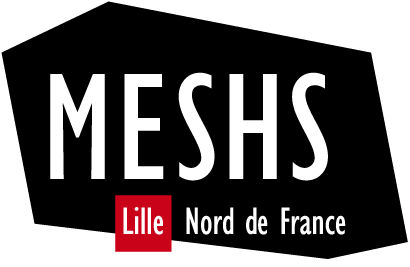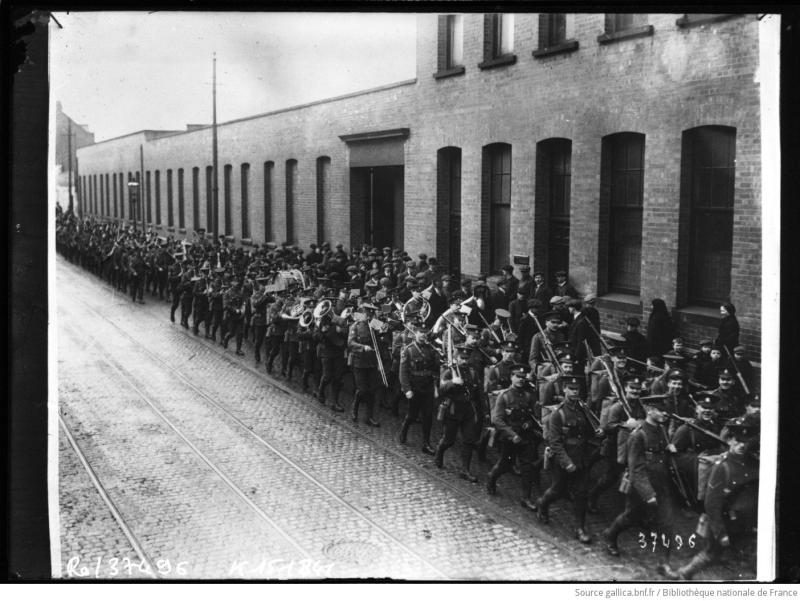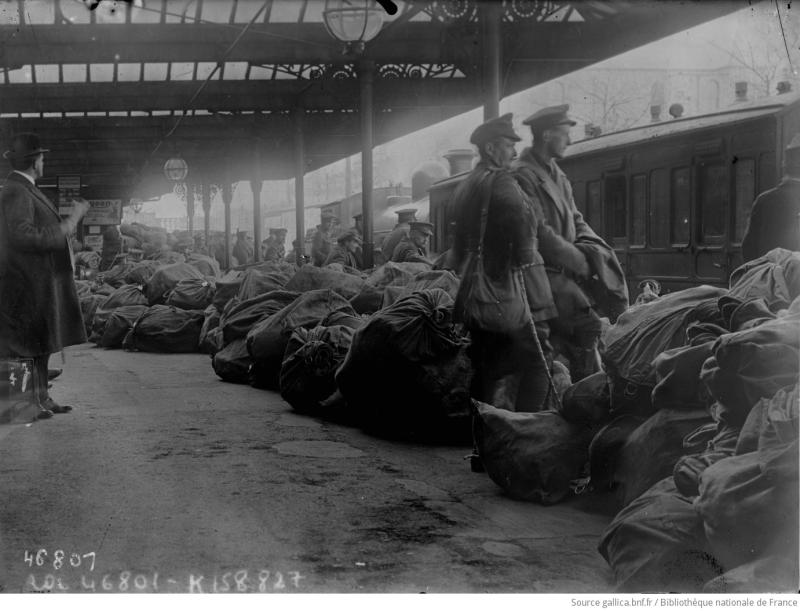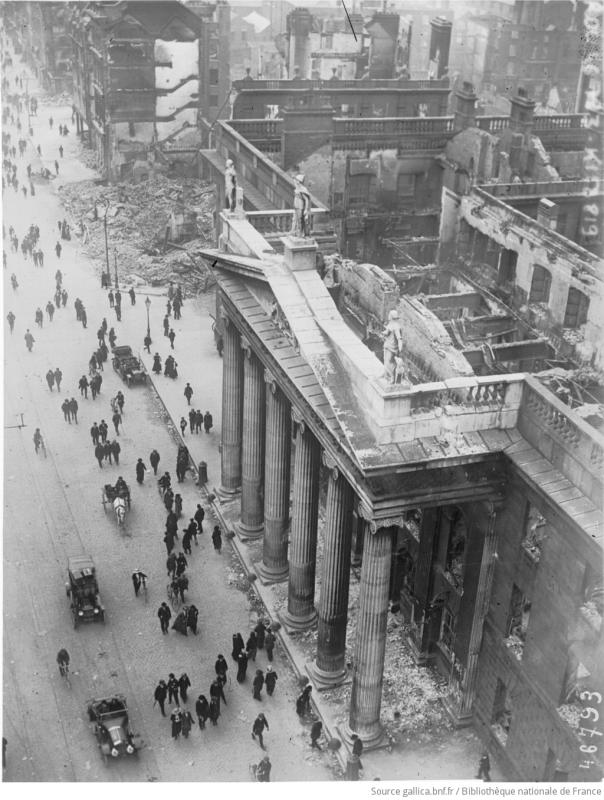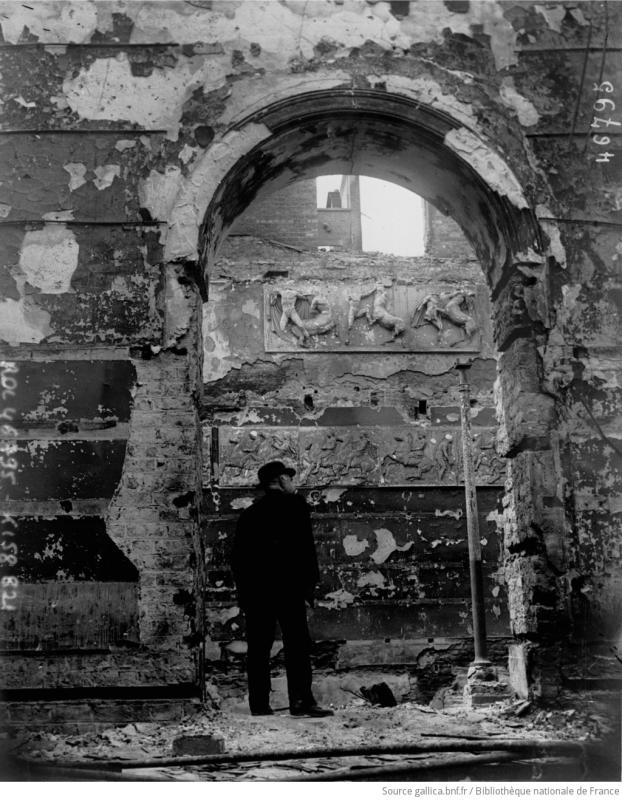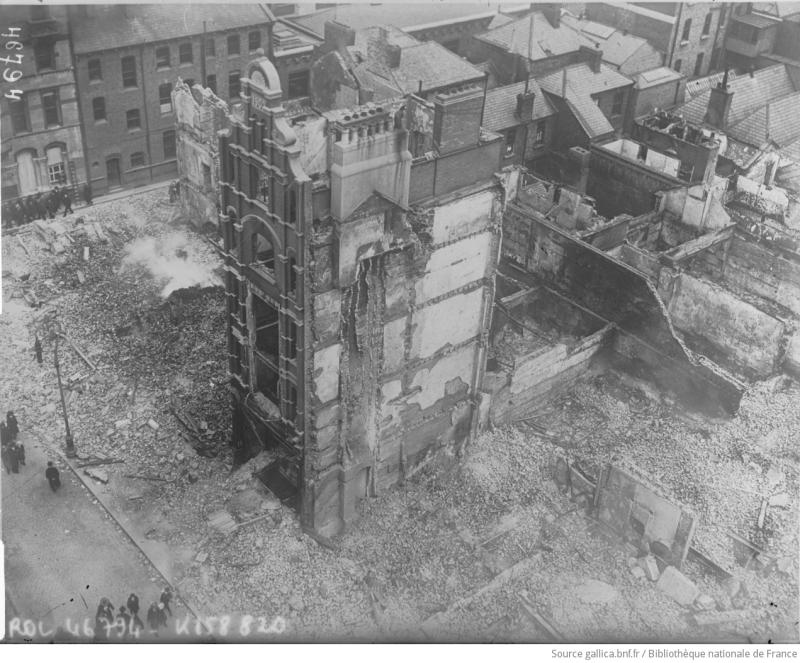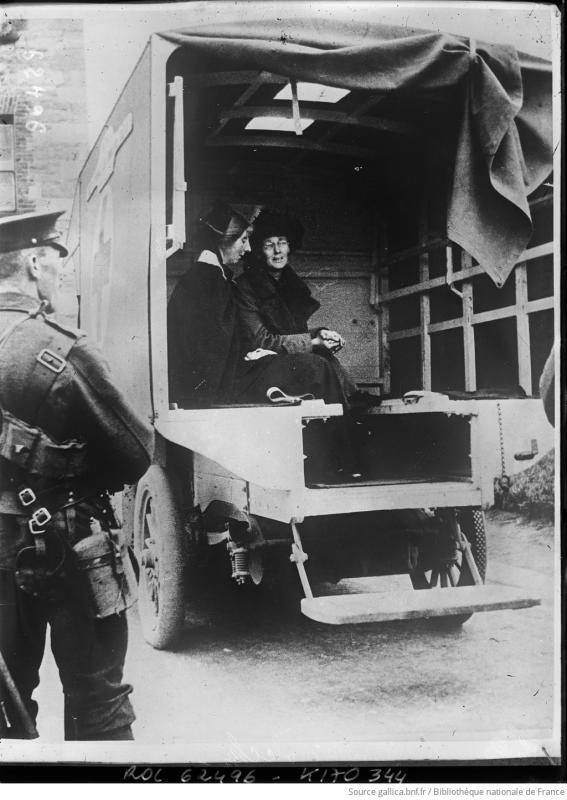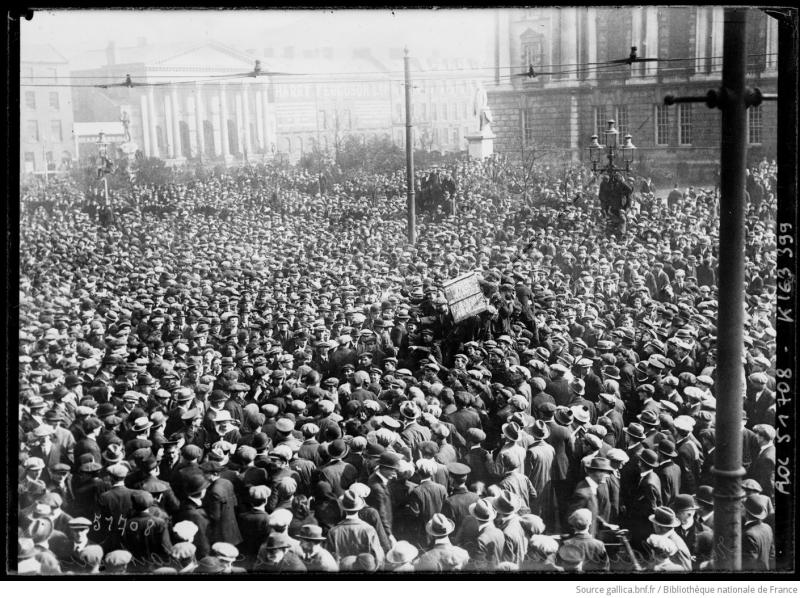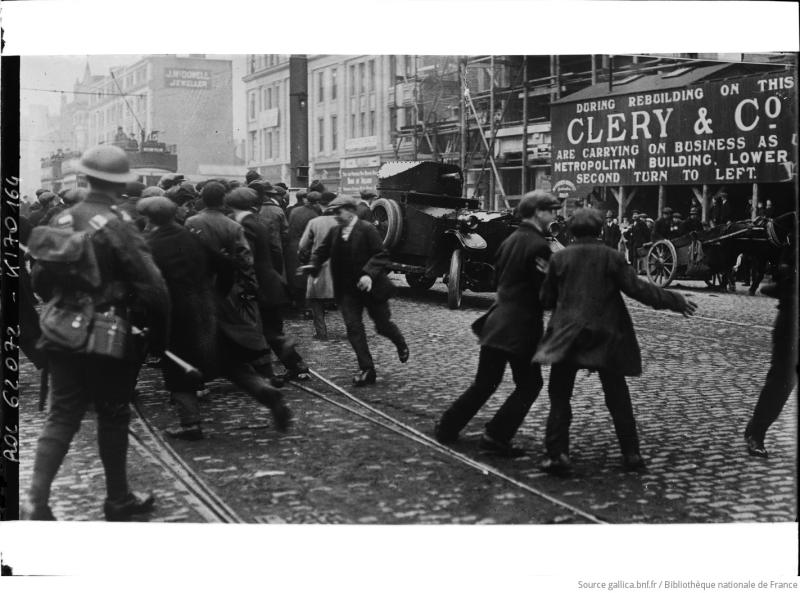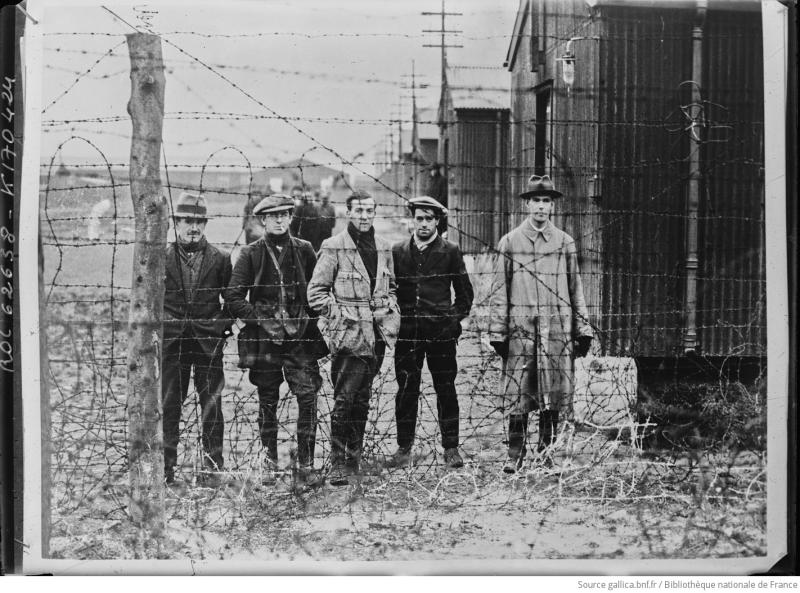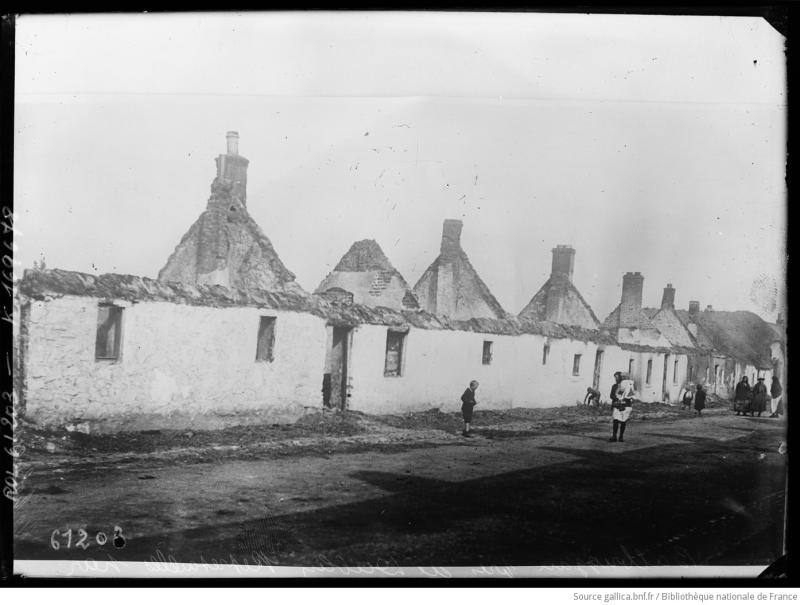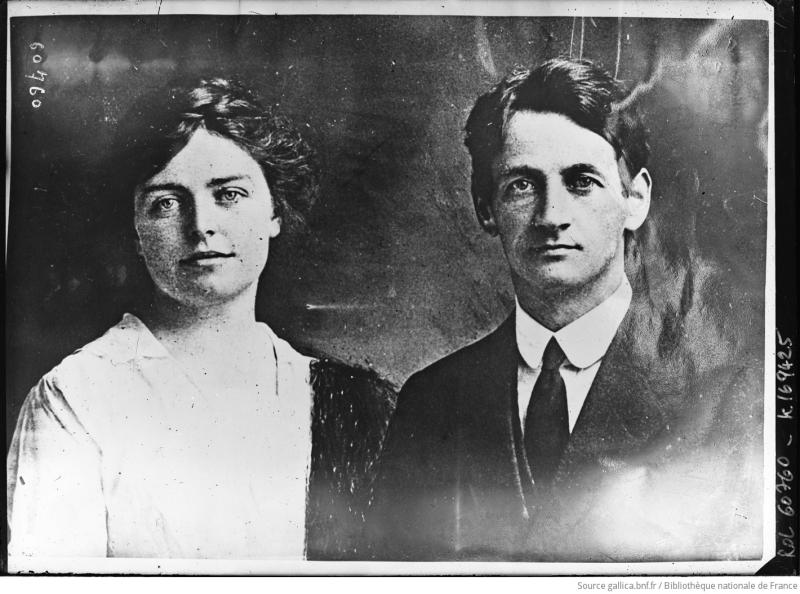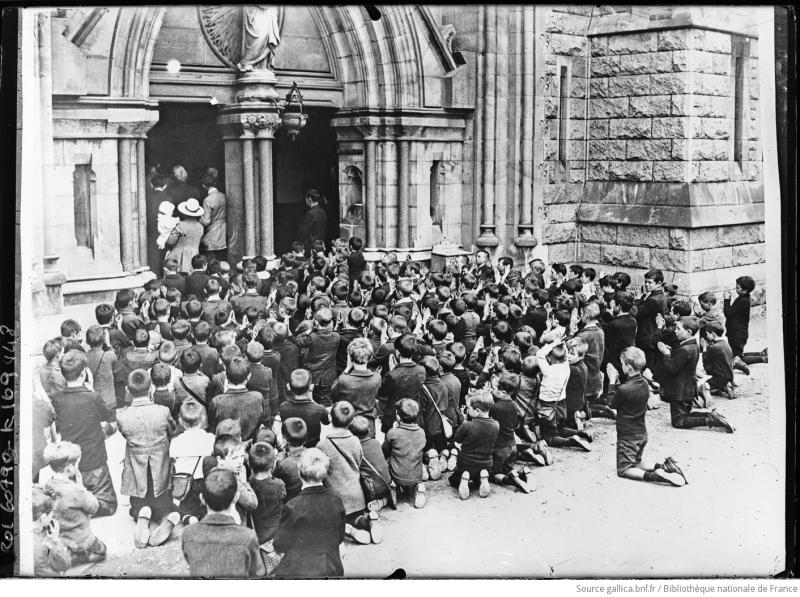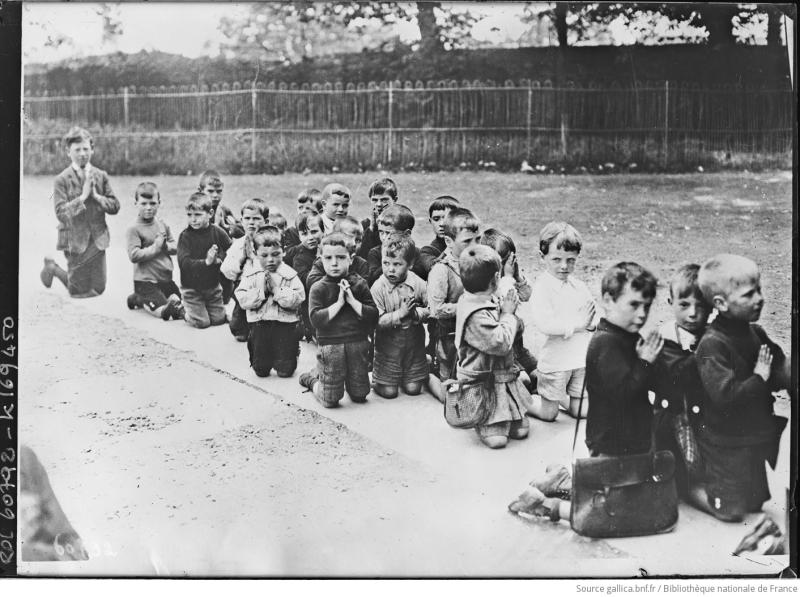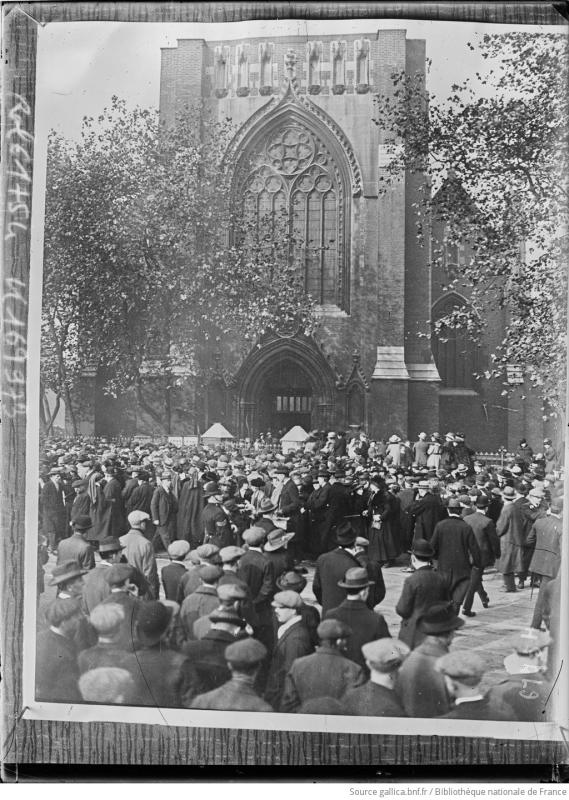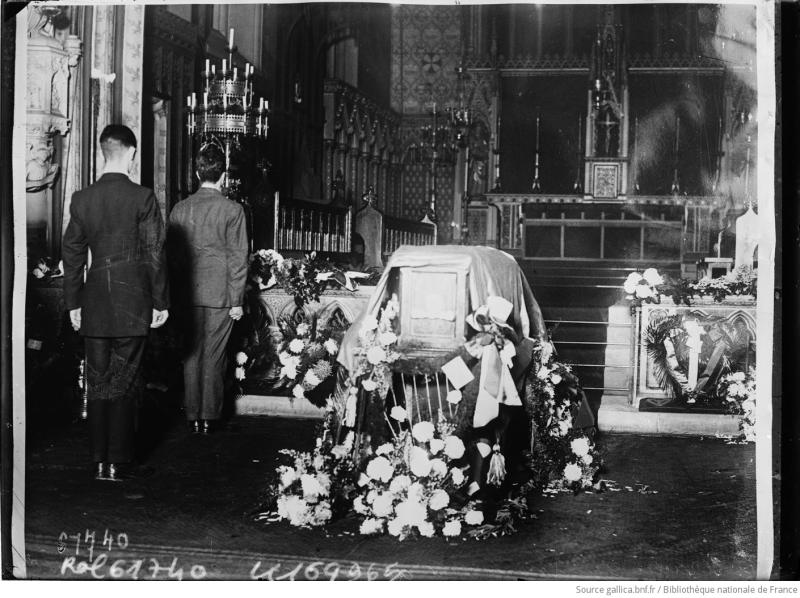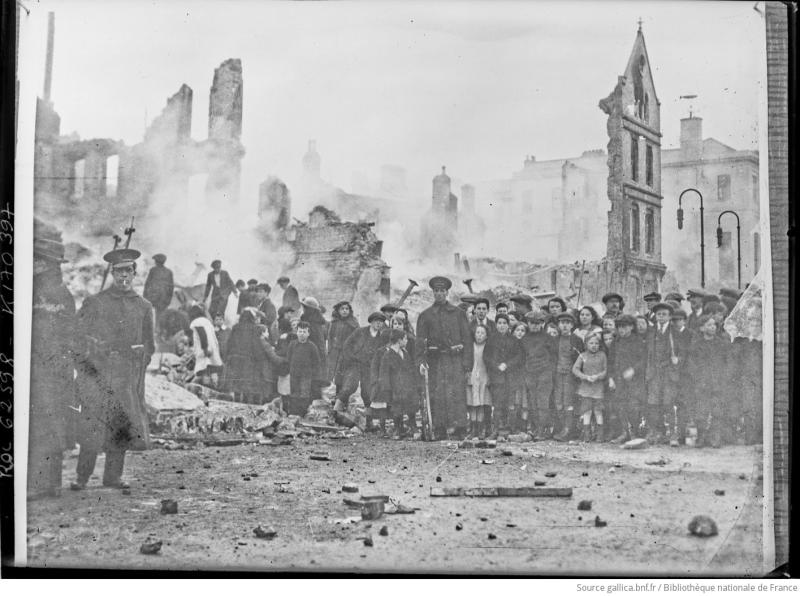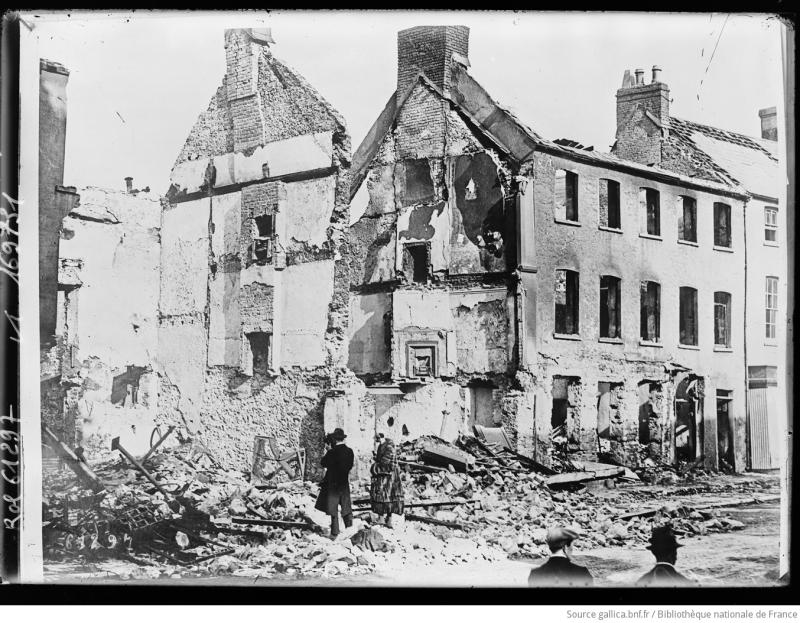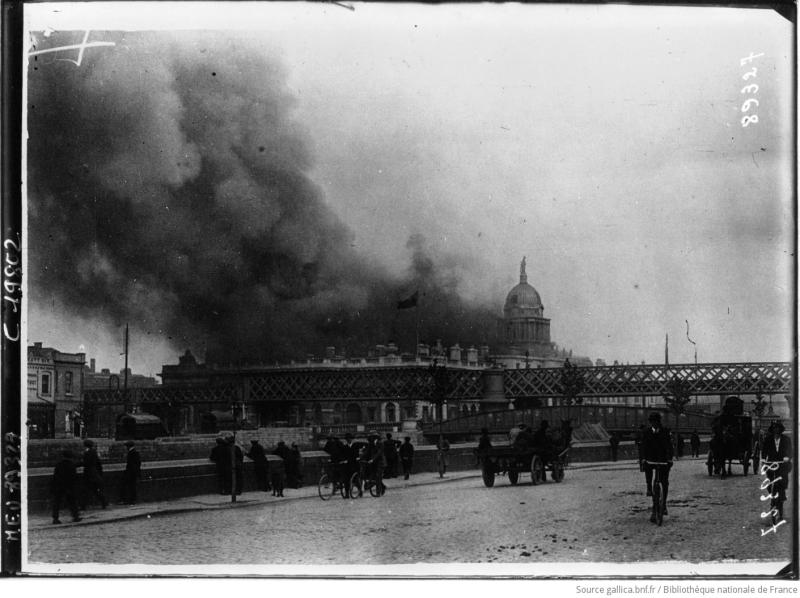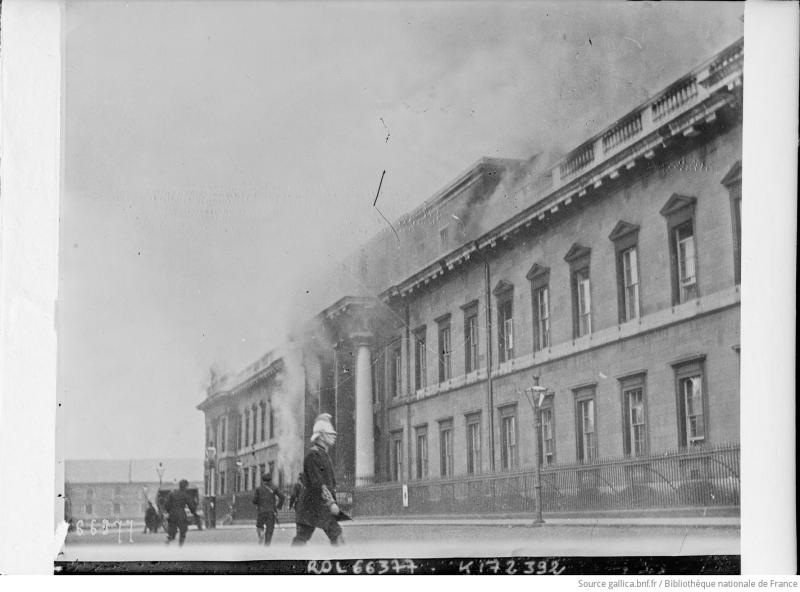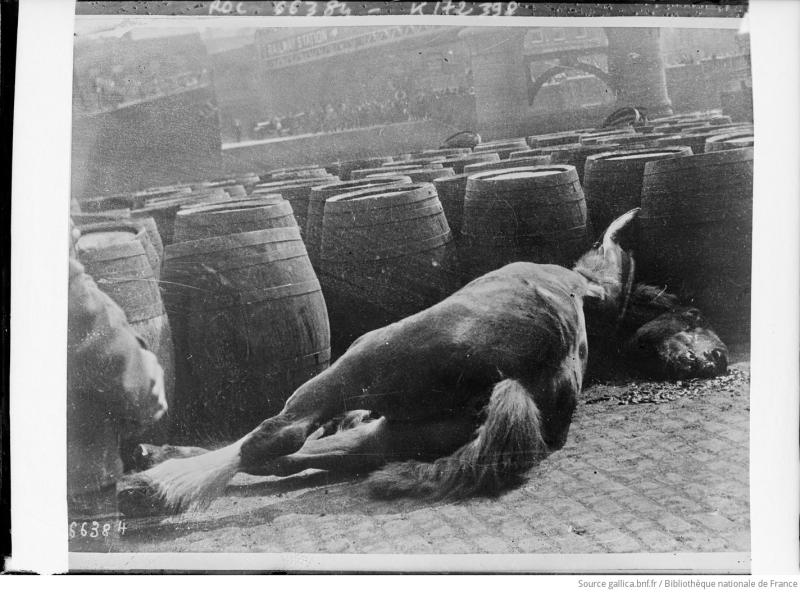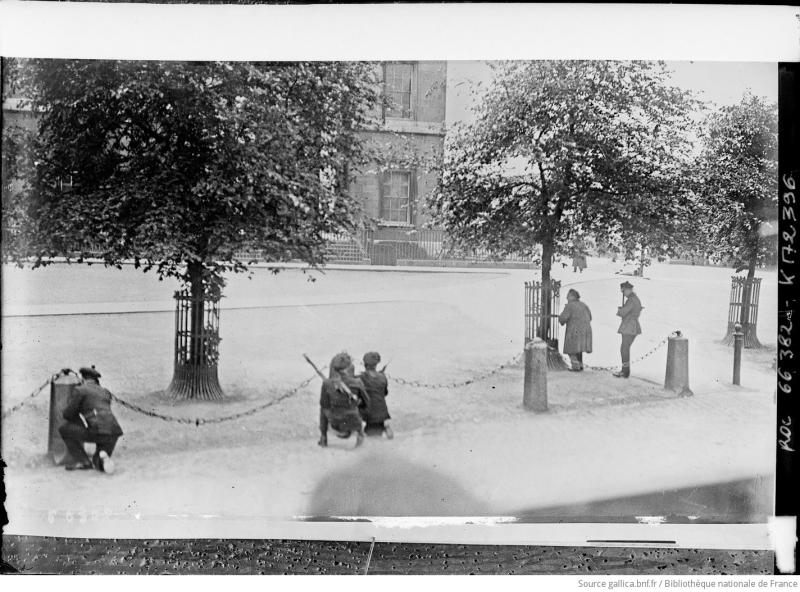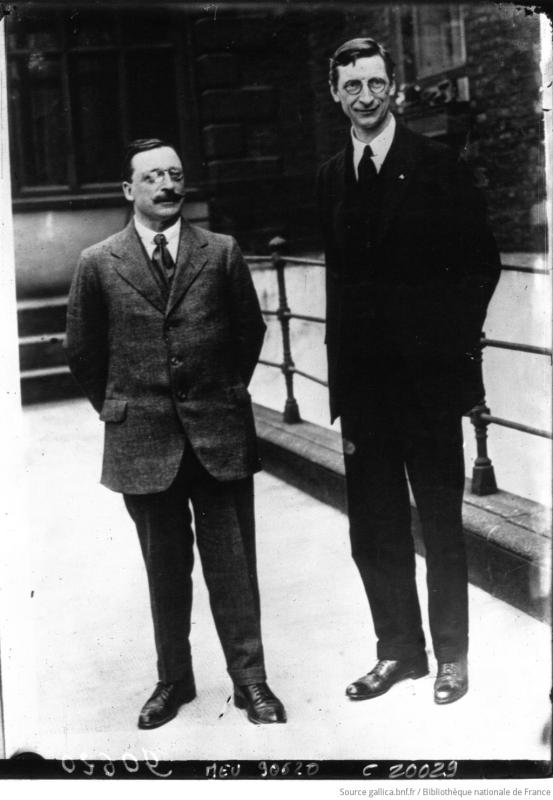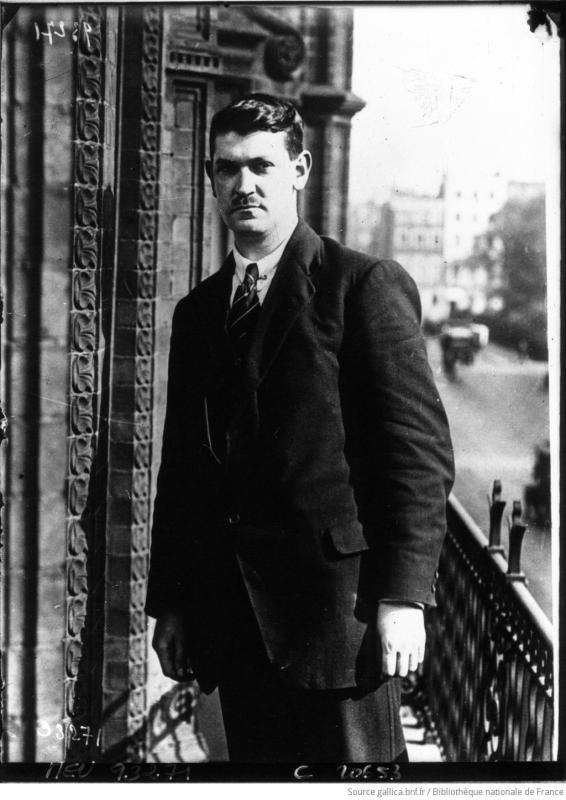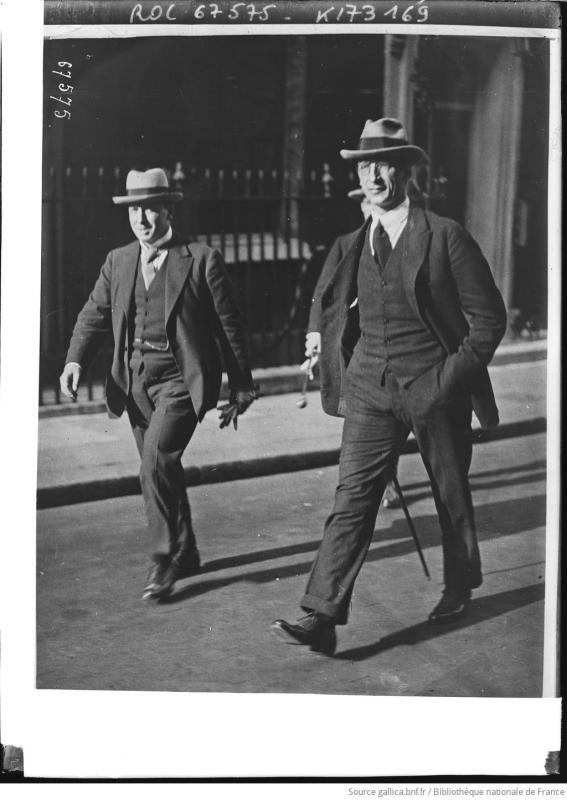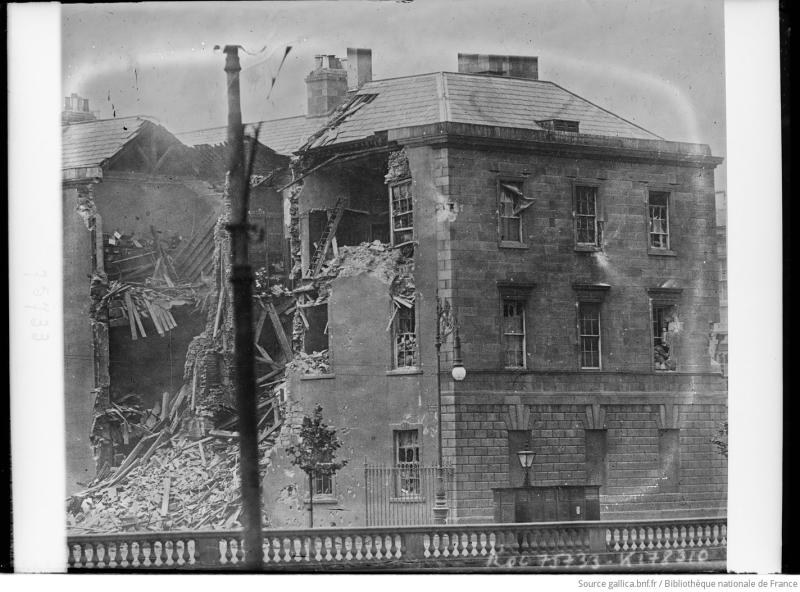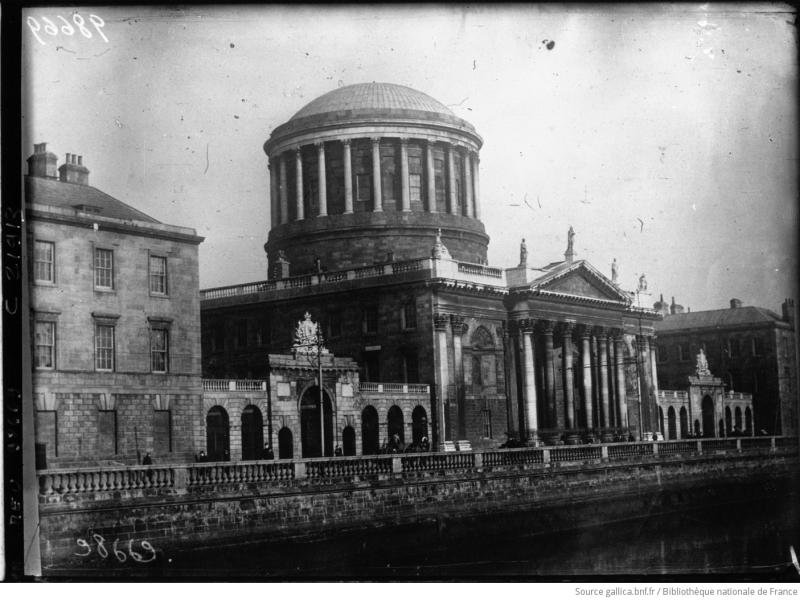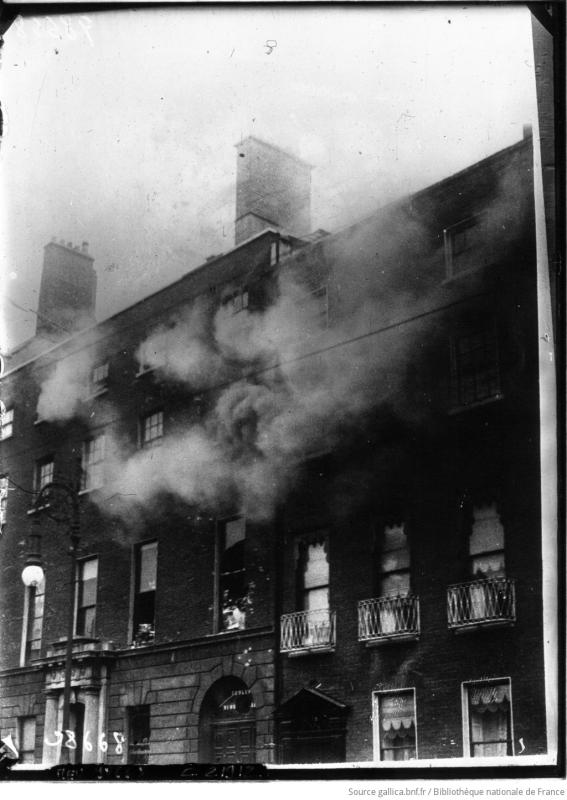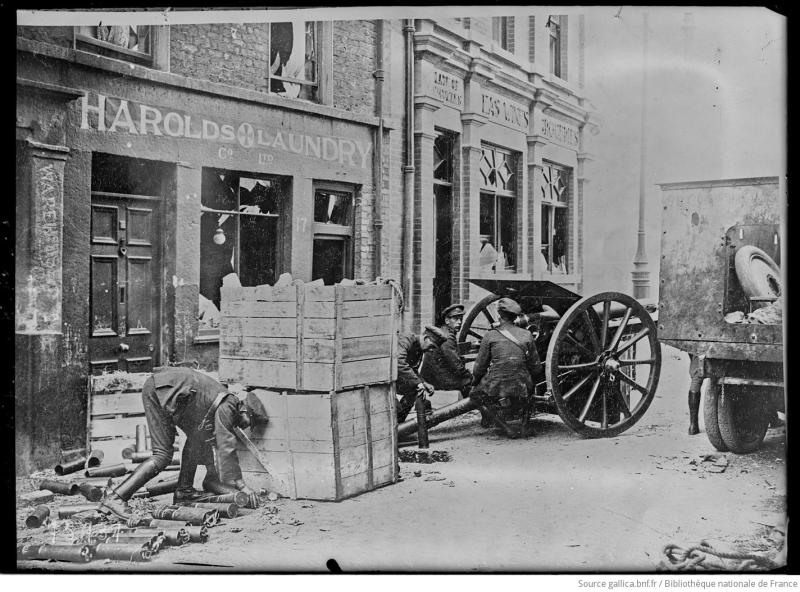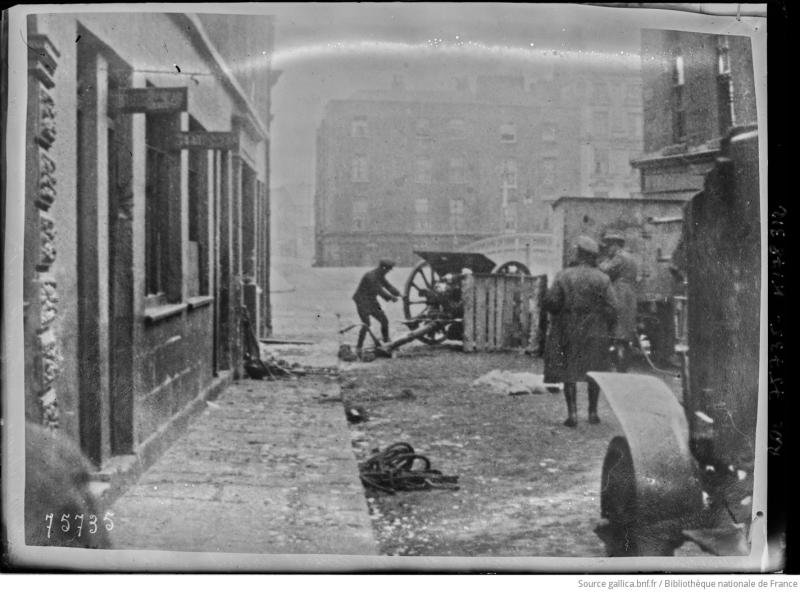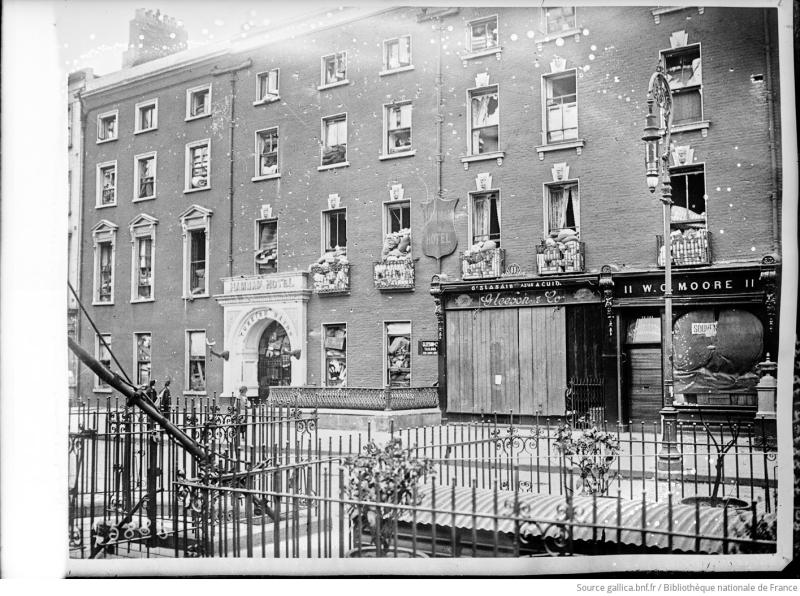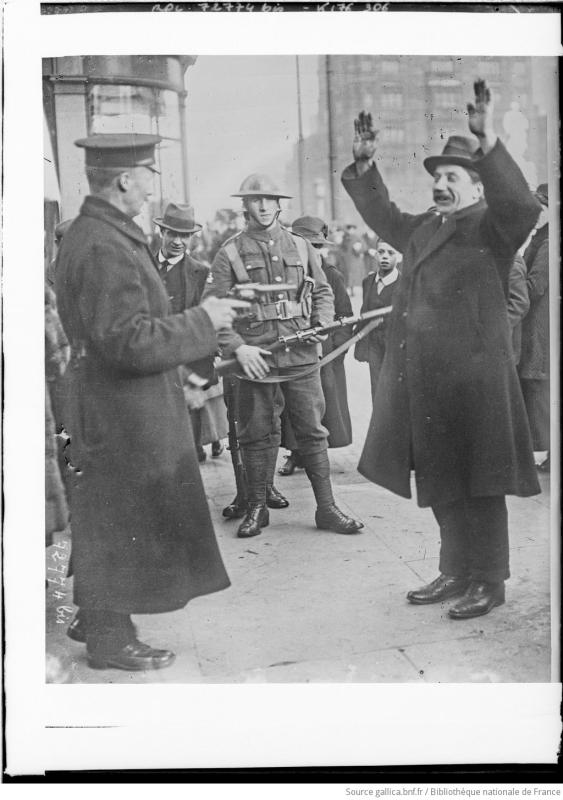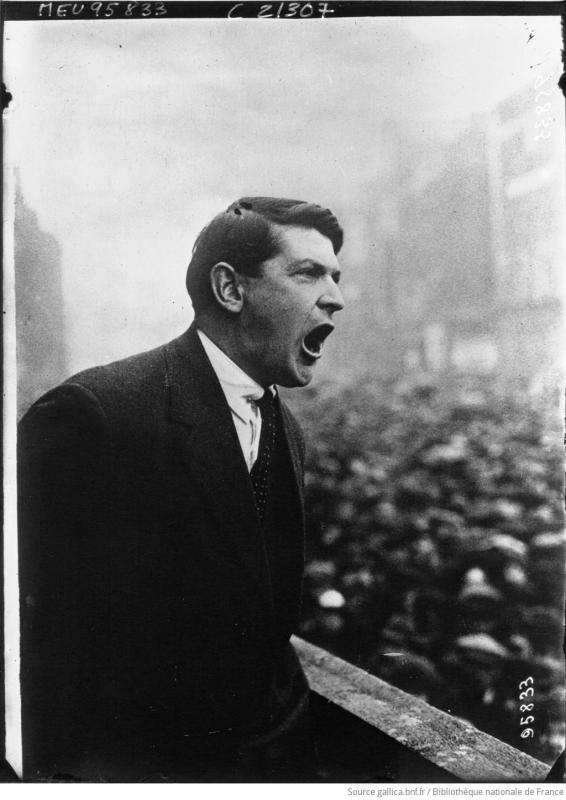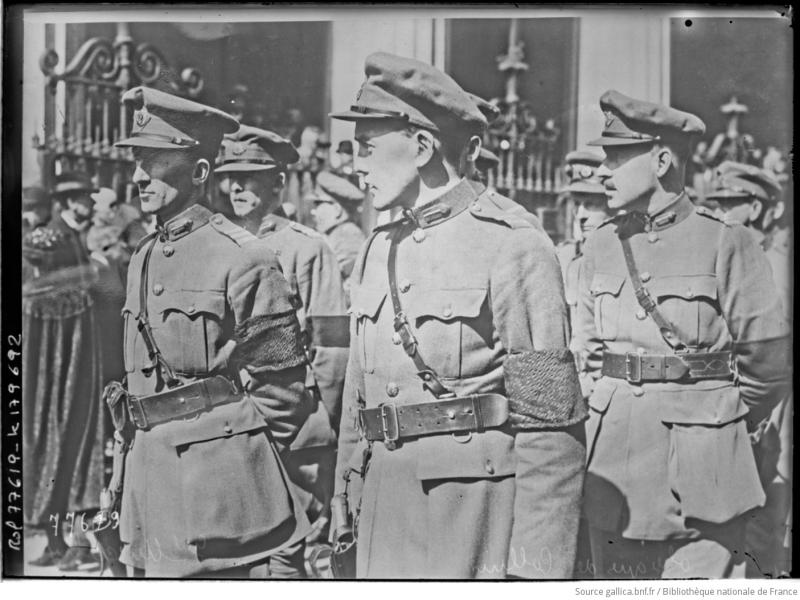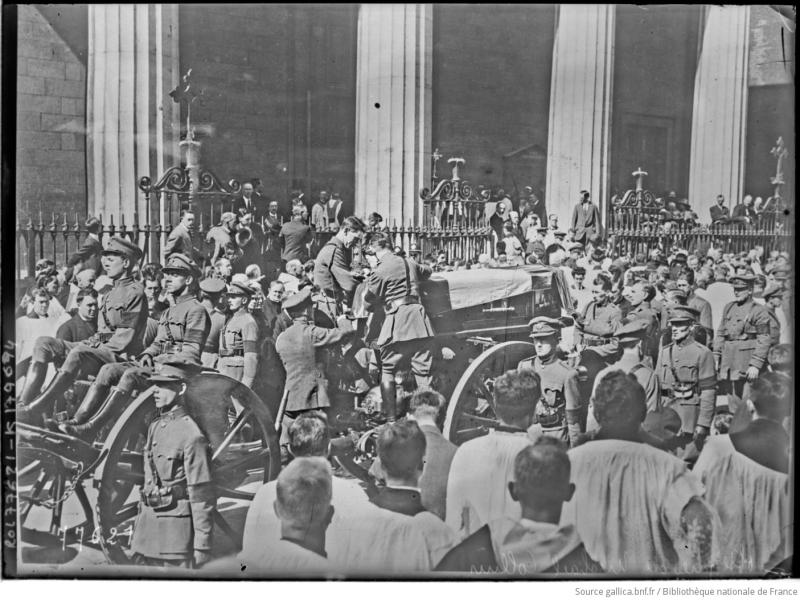Key events
The Home Rule Crisis
A political and military crisis was triggered by the proposal of the third Home Rule Bill in 1912. The bill proposed to grant self-government to Ireland within the United Kingdom. Unionists in the north of Ireland opposed it, and on 28 September 1912 in Belfast, nearly 500,000 people signed a covenant to express their opposition. In 1913, under the leadership of Edward Carson and James Craig, a paramilitary force, the Ulster Volunteers, was created to resist the implementation of the bill. In reaction, nationalists established the Irish Volunteers to ensure self-government from Dublin. Meanwhile, Cumann na mBan (The Irish Women’s Council), a nationalist women’s paramilitary organisation, was founded in 1914 to support the Irish Volunteers.
Faced with this unrest, the British government prepared to take military action against the unionists. On 20 March 1914, at the Curragh Camp – the main base for the British Army in Ireland – several officers of unionist/Protestant backgrounds threatened to resign rather than carry out orders. The government was forced to back down. In September 1914, King George V approved the bill, but the outbreak of the First World War halted its implementation.
The Easter Rising
The Easter Rising was a military operation organised by republican groups during Easter Week 1916. It began on Monday, 24 April, when the Irish Citizen Army and the Irish Volunteers occupied several strategic sites in central Dublin, such as the General Post Office, Jacob’s Biscuit Factory, and the Four Courts. Revolutionary leader Pádraig Pearse, among others, proclaimed the Irish Republic in front of the General Post Office. Among the rebels were members of Cumann na mBan and the Irish Citizen Army, which had female officers. Street fighting and shootings took place, mainly in Dublin, throughout the week. Though the British army was initially surprised, the arrival of reinforcements and the use of artillery reversed the balance of power. The Rising ended on 29 April with the surrender of the insurgents.
Initially, public opinion condemned the Rising and its leaders. But the execution of the leaders generated growing sympathy and turned the event into a political and symbolic success for the nationalist movement.
The Conscription Crisis
In 1918, the British army was suffering from a shortage of troops. The government, which had already introduced conscription in Great Britain in 1916, chose to extend this measure to Ireland. However, at the start of the war in 1914, many Irishmen had already volunteered for the British army. The announcement provoked massive opposition in Ireland, particularly among trade unions, bishops, and nationalist parties. Conscription was ultimately never implemented in Ireland, strengthening support for Irish nationalists.
The Irish War of Independence
IRA fought a guerrilla war campaign against British forces composed of the British army, the Royal Irish Constabulary, and its paramilitary units, the Auxiliaries and the Black and Tans. In December 1918, Sinn Féin won the general election and, on 21 January 1919, declared an independent government, Dáil Éireann, outside the jurisdiction of the British parliament. On the same day, a group of IRA volunteers, without authorisation from the Dáil, carried out an ambush at Soloheadbeg and killed two RIC officers. This event marked the beginning of the War of Independence. The conflict was characterised by IRA ambushes and brutal reprisals by British forces. In Ulster, a sectarian conflict broke out between Catholics (who largely supported the IRA) and Protestant loyalists. A special police force composed mainly of Protestants was created and carried out reprisals against Catholics.
The fighting continued until 11 July 1921, the date of a truce that led to the London peace negotiations and the signing of the Anglo-Irish Treaty on 6 December 1921. Although the treaty was approved by Dáil Éireann, it led to the partition of Ireland and civil war.
The 1920 Hunger Strike in Cork
On 11 August 1920, 65 men interned without trial in Cork Prison began a hunger strike to demand their release and recognition of their status as political prisoners. The next day, the Lord Mayor of Cork, Terence MacSwiney, joined them. Arrested on 12 August 1920, he was sentenced to two years in prison and transferred to Brixton. Refusing to eat, he died after 74 days, on 25 October 1920. Two other strikers, Michael Fitzgerald and Joe Murphy, also died in October. After 94 days, on 12 November, the order was given to end the strike. The deaths of MacSwiney and the others attracted worldwide attention and strengthened the cause of independence. The hunger strike was closely followed and supported by the prisoners’ families and female republican organisations. The sisters of Terence MacSwiney, Mary and Annie MacSwiney, became prominent republican figures in their own right, with Mary later being elected as a Sinn Féin TD.
Bloody Sunday in Dublin
On the morning of 21 November 1920, the IRA, under the direction of Michael Collins, carried out an operation to eliminate British agents known as the ‘Cairo Gang’. Fifteen were killed. In the afternoon, British forces fired on the crowd at a football match in Croke Park, killing 14 civilians and wounding about 80 others. That evening, three prisoners were executed in Dublin Castle. This day was a disaster for the British army: its intelligence capabilities were weakened and the massacre at Croke Park increased public support for the IRA.
The Kilmichael Ambush
One week after Bloody Sunday, the IRA carried out an ambush near Kilmichael, County Cork. Under the leadership of Tom Barry, 36 volunteers killed 16 RIC Auxiliaries. This episode marked an intensification of the IRA’s campaign.
The Burning of Cork
On 10 December 1920, the British army proclaimed martial law in several counties. The next day, the IRA attacked Auxiliaries at Dillon’s Cross, County Cork. In reprisal, British forces burned many buildings, including City Hall, destroying more than 300 houses and 40 businesses.
The Occupation and Burning of the Custom House
On 25 May 1921, about 120 IRA volunteers occupied the Custom House in Dublin. After British forces intervened, a fire was started in the building. Although the operation resulted in a military failure, it was considered a propaganda success for the IRA.
Bloody Sunday in Belfast
On the eve of the truce, Belfast experienced a surge of sectarian violence. Police conducted raids against republicans, the IRA retaliated, and Protestant loyalists attacked Catholic neighbourhoods. Some twenty people were killed on 10 and 11 July, and over 1,000 Catholics were forced from their homes. Between July 1920 and June 1922, nearly 500 people – mostly civilians – were killed in Belfast.
The Truce and the Anglo-Irish Treaty
A ceasefire was declared on 11 July 1921, ending the War of Independence. Negotiations resulted in the Anglo-Irish Treaty of 6 December 1921. This created the Irish Free State, a member of the Commonwealth, but formalised partition. Dáil Éireann narrowly approved the treaty, leading to deep division and civil war. All six elected female TDs, including Constance Markievicz, opposed the Treaty.
The Irish Race Convention in Paris
From 21 to 28 January 1922, while Ireland was on the brink of civil war, the Irish Race Congress was held in Paris. Organised by Éamon de Valera, it brought together members of the Irish diaspora to secure international recognition for the Irish Republic.
The Irish Civil War
The division created by the Anglo-Irish Treaty triggered the civil war. The provisional government of the Irish Free State was pitted against anti-Treaty IRA supporters. The civil war began officially with the Battle of Dublin in June 1922 and continued as a guerrilla war until May 1923. More than 1,400 people died, including 336 civilians. The Free State government imprisoned as many as 600 women during the conflict – far more the British did during the War of Independence – a testament to women’s increased activism on the anti-treaty side.
The Battle of Dublin
On 28 June 1922, the Free State Army attacked the Four Courts, which were occupied by the anti-Treaty IRA. After several days of fighting, the anti-treaty forces surrendered, but clashes continued in the city for nearly a week. At least 80 people were killed, including 35 civilians. Among the dead was Cathal Brugha.
The Death of Michael Collins
On 22 August 1922, Michael Collins, head of the Free State Army, was killed in an ambush at Béal na Bláth in his native County Cork. His death was a major blow to the pro-Treaty side. His funeral in Dublin attracted about 500,000 people.
